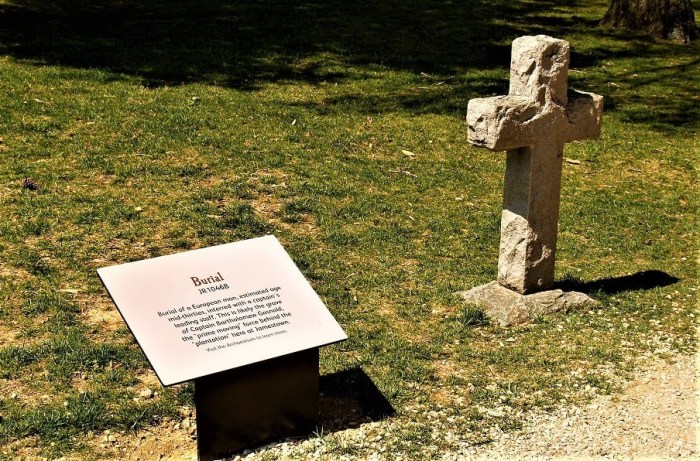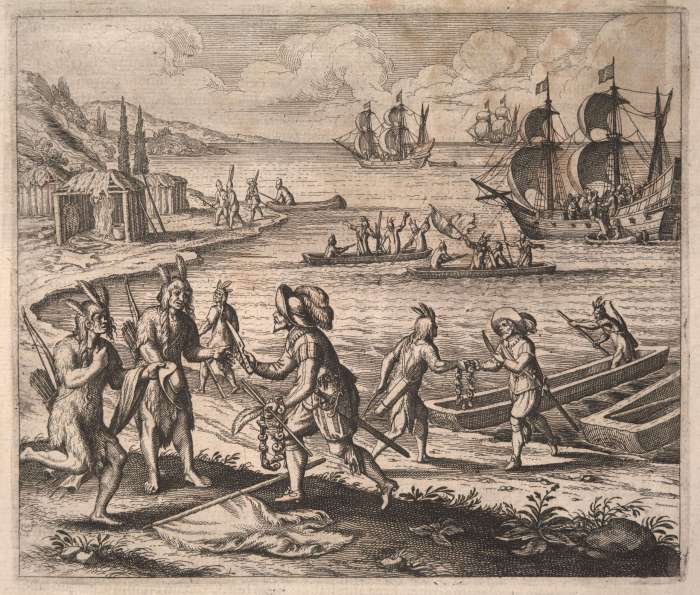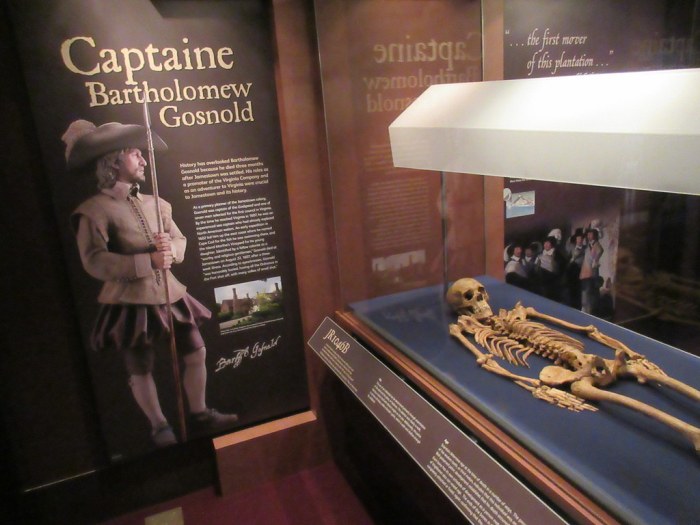Captain bartholomew gosnold forensic anthropology – In the annals of forensic anthropology, the examination of Captain Bartholomew Gosnold’s remains stands as a testament to the power of this scientific discipline to illuminate the lives and experiences of historical figures. This article delves into the captivating story of Gosnold’s exploration, the forensic analysis of his remains, and the remarkable insights gained into the challenges and realities of early exploration.
Gosnold, an intrepid English explorer, embarked on a voyage to the New England coast in 1602, leaving an enduring mark on the region. His discovery of Cape Cod and the Elizabeth Islands played a pivotal role in shaping the course of European exploration and settlement in North America.
Captain Bartholomew Gosnold’s Exploration and Discovery

Captain Bartholomew Gosnold was an English explorer who played a significant role in the early exploration of the New England coast. Born in 1571, Gosnold embarked on several voyages to the Americas, including a notable expedition in 1602 that resulted in the discovery of Cape Cod and the Elizabeth Islands.
In 1602, Gosnold led a group of English colonists to the New England coast. They landed on the shores of what is now Cape Cod, which Gosnold named after the abundant codfish found in the area. The colonists then explored the surrounding islands, including the Elizabeth Islands, which were named after Queen Elizabeth I.
Gosnold’s discovery of Cape Cod and the Elizabeth Islands was significant because it marked the first English settlement in the New England region. It also paved the way for further exploration and colonization of the area by English settlers.
Forensic Anthropology and the Study of Captain Gosnold’s Remains
Forensic anthropology is the scientific study of human remains to determine factors such as age, sex, ancestry, and possible cause of death. Forensic anthropologists use a variety of methods to analyze skeletal remains, including:
- Osteology: The study of bones, including their size, shape, and structure.
- Odontology: The study of teeth, including their size, shape, and wear patterns.
- Paleopathology: The study of ancient diseases and injuries, as evidenced by skeletal remains.
In 1998, a team of forensic anthropologists led by Dr. Douglas Owsley examined the skeletal remains of Captain Bartholomew Gosnold, which were discovered in Jamestown, Virginia in 1994. The anthropologists used a variety of techniques to determine Gosnold’s age, sex, ancestry, and possible cause of death.
Findings from the Forensic Analysis of Captain Gosnold’s Remains

The forensic analysis of Captain Bartholomew Gosnold’s remains revealed several key findings:
- Age: Gosnold was approximately 45 years old at the time of his death.
- Sex: Gosnold was male.
- Ancestry: Gosnold was of European descent.
- Health: Gosnold showed signs of osteoarthritis and dental disease, which were common health problems during the 17th century.
- Cause of death: The forensic anthropologists could not determine the exact cause of Gosnold’s death, but they suggested that he may have died from an infection or a fall.
These findings provide valuable insights into the physical characteristics, health, and possible cause of death of Captain Bartholomew Gosnold.
Comparison with Other Early Explorers

The forensic analysis of Captain Bartholomew Gosnold’s remains can be compared to that of other early explorers, such as Christopher Columbus and John Smith. These comparisons can provide insights into the challenges and experiences of early exploration.
For example, the forensic analysis of Christopher Columbus’s remains revealed that he was approximately 50 years old at the time of his death and that he suffered from gout and arthritis. The forensic analysis of John Smith’s remains revealed that he was approximately 52 years old at the time of his death and that he had suffered from a number of injuries, including a gunshot wound to the thigh.
These comparisons suggest that early explorers faced a number of health challenges, including infectious diseases, malnutrition, and injuries. They also suggest that early explorers were often involved in dangerous and physically demanding activities.
Significance and Impact of the Forensic Analysis: Captain Bartholomew Gosnold Forensic Anthropology

The forensic analysis of Captain Bartholomew Gosnold’s remains has had a significant impact on historical research and the field of forensic anthropology.
For historical research, the forensic analysis has provided valuable insights into the life and times of Captain Bartholomew Gosnold. It has also helped to shed light on the challenges and experiences of early explorers.
For the field of forensic anthropology, the forensic analysis has demonstrated the value of using scientific methods to study human remains. It has also helped to establish forensic anthropology as a valuable tool for historical research.
FAQ Section
What was the significance of Captain Bartholomew Gosnold’s exploration?
Gosnold’s exploration of the New England coast in 1602 was significant for several reasons. First, he was the first European to explore and map the coastline of Cape Cod and the Elizabeth Islands. Second, his voyage provided valuable information about the natural resources and potential for settlement in the region.
Third, Gosnold’s exploration helped to pave the way for the establishment of the Plymouth Colony in 1620.
How did forensic anthropology contribute to our understanding of Captain Gosnold?
Forensic anthropology played a crucial role in providing insights into Captain Gosnold’s life and experiences. By analyzing his skeletal remains, anthropologists were able to determine his age, sex, ancestry, and health status. They also identified evidence of trauma, which helped to shed light on the possible cause of his death.
What are the implications of the forensic analysis of Captain Gosnold’s remains for our understanding of early exploration?
The forensic analysis of Captain Gosnold’s remains has provided valuable information about the challenges and experiences of early explorers. By comparing his remains to those of other early explorers, anthropologists have gained insights into the physical demands, health risks, and potential causes of death faced by these intrepid adventurers.

